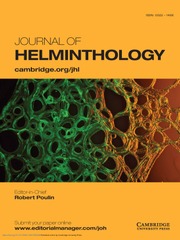No CrossRef data available.
Article contents
Advantages and limitations of diagnostic procedures for zoonotic helminth infections in feces
Published online by Cambridge University Press: 20 January 2025
Abstract
Helminthiasis is a common infection in both humans and other animal populations and negatively affects the health of the host, causing a range of morbidity and even mortality, especially in young people and those with weakened immune systems. A variety of diagnostic procedures with a number of modifications are available to identify the sources of infection and to assess the epidemiological situation, the effectiveness of parasite control programs, anthelmintic treatment, and the prevention of drug resistance. These can be simple and cheap methods – for example, stool smear examination – or modern highly sensitive methods – for example, PCR analysis. This review attempts to summarize the advantages and limitations of each of these frequently used methods.
Information
- Type
- Review Article
- Information
- Copyright
- © The Author(s), 2025. Published by Cambridge University Press

